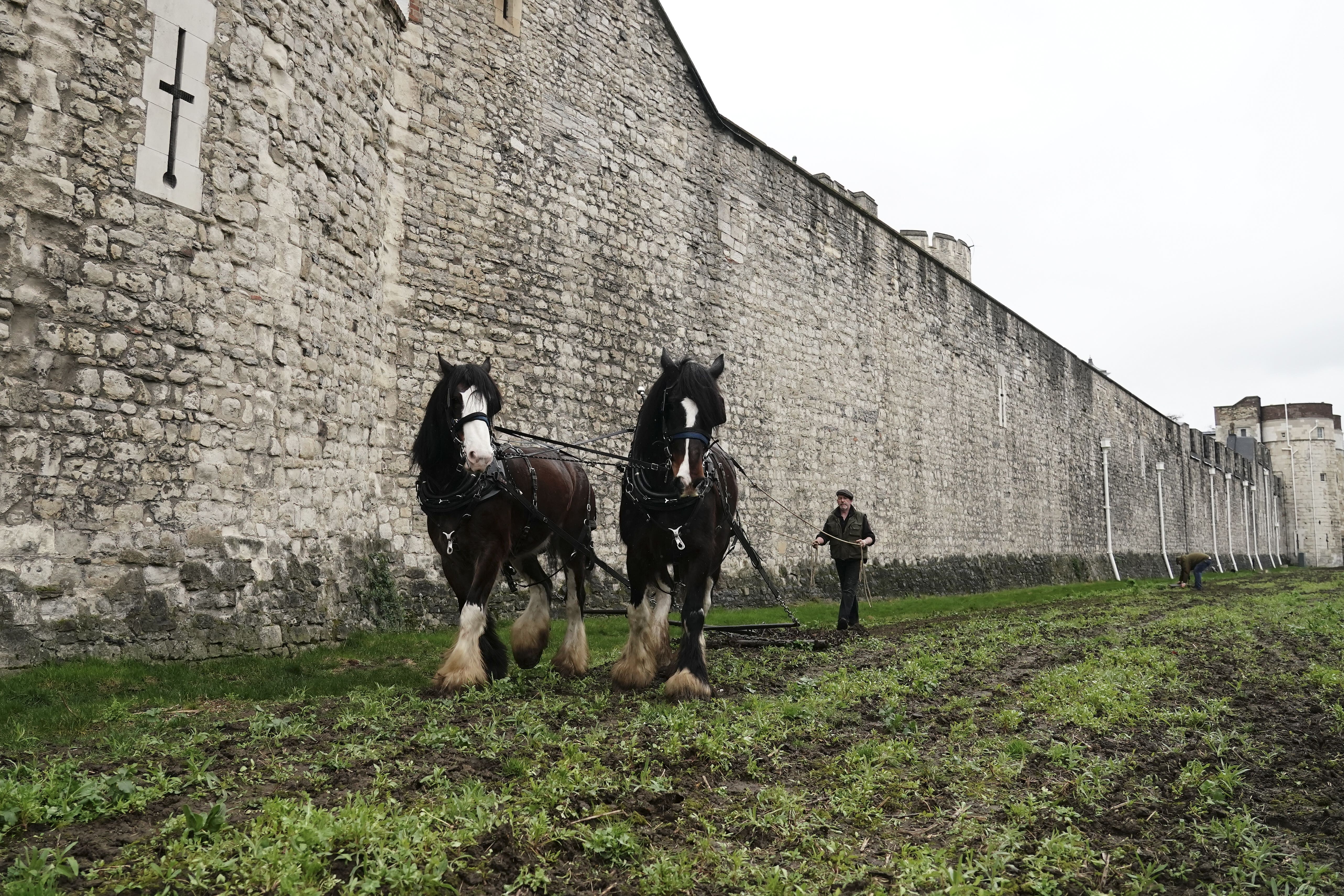Shire horses prepare Tower of London moat for wildflower display
Stallions, named William and Joey, have ploughed the ground to encourage a bountiful display at the heritage site.

Your support helps us to tell the story
From reproductive rights to climate change to Big Tech, The Independent is on the ground when the story is developing. Whether it's investigating the financials of Elon Musk's pro-Trump PAC or producing our latest documentary, 'The A Word', which shines a light on the American women fighting for reproductive rights, we know how important it is to parse out the facts from the messaging.
At such a critical moment in US history, we need reporters on the ground. Your donation allows us to keep sending journalists to speak to both sides of the story.
The Independent is trusted by Americans across the entire political spectrum. And unlike many other quality news outlets, we choose not to lock Americans out of our reporting and analysis with paywalls. We believe quality journalism should be available to everyone, paid for by those who can afford it.
Your support makes all the difference.The Tower of London has employed a pair of shire horses to transform its moat into a permanent haven for wildflowers.
Around 20 million seeds were planted in the famous fortress’s moat last year for its first-ever floral display.
Now the dark brown and white stallions, named William and Joey, have ploughed the ground ahead of this summer’s bloom after being brought over from Henry VIII’s palace at Hampton Court.
The horses’ flare-like feathered hooves do not compact the soil as much as modern machines, allowing the seedlings from last year to survive.
It means the moat’s floral landscape will be more vivid than ever when it reopens to visitors on 26 May.
The moat was first dug in 1281 during the reign of King Edward I and was drained by the Duke of Wellington in the 1840s during his tenure as Constable of the Tower.
It has since been used to graze livestock, billet soldiers during Queen Victoria’s Diamond Jubilee and grow allotment vegetables in the Second World War.
More recently, it was home in 2014 to a display of 888,246 ceramic poppies marking the 100th anniversary of the outbreak of the First World War.